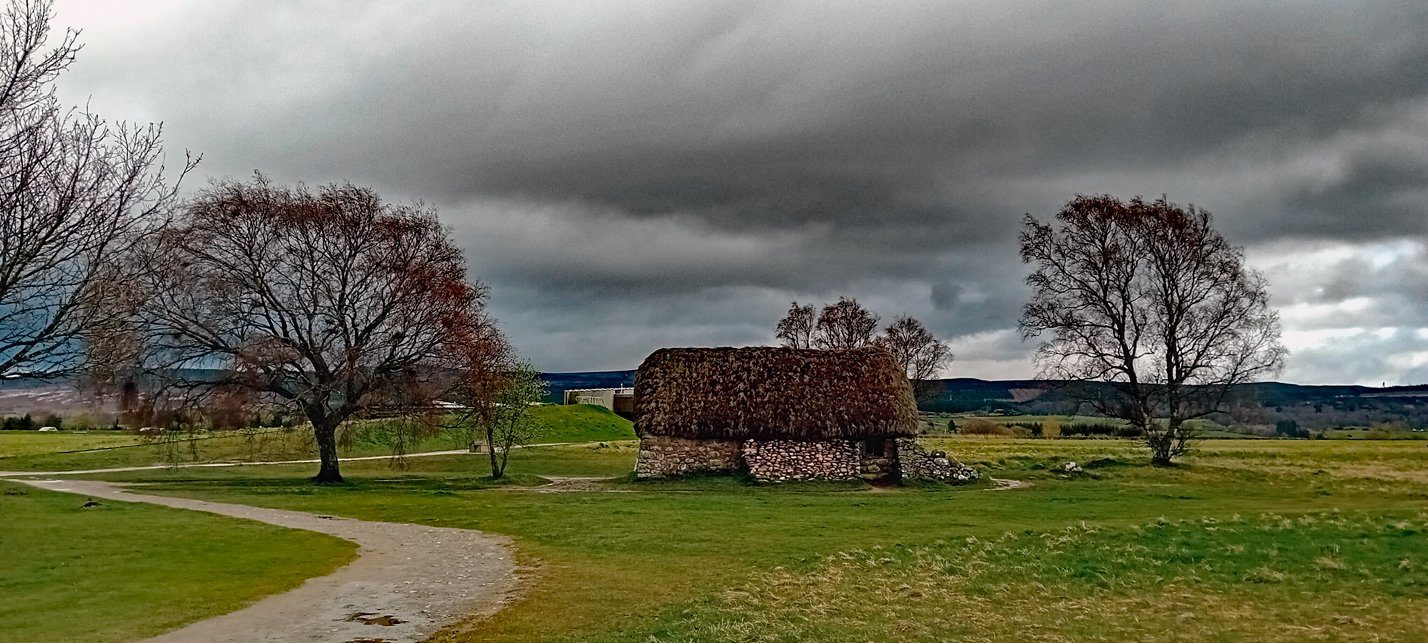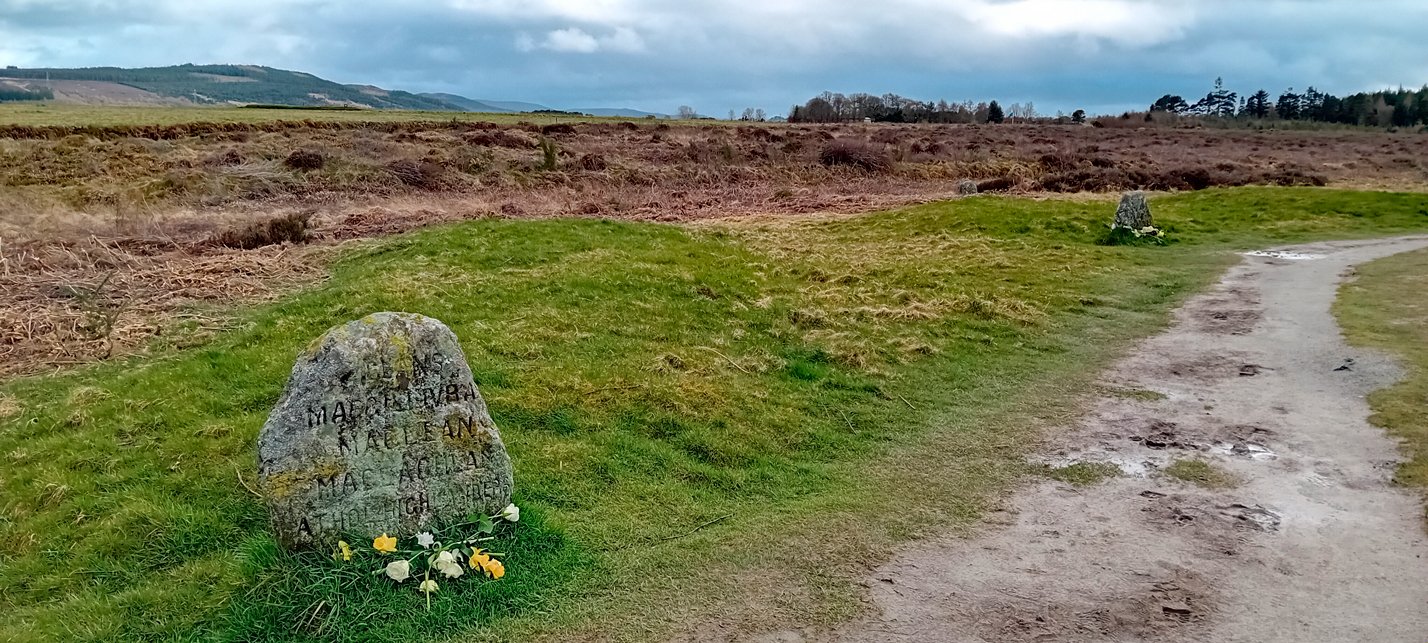Romantic Cloud of Passion
We aim to voice our opinions in a balanced, transparent and non-discriminatory fashion. Our blog pages are constructed with this in mind and where we have strong feelings or opinions we will express them but not at the expense of intentionally harming or slighting any other person. Some of our blog pages contain historical research and how we have interpreted it as well as our opinions and understanding of events.
Please Respect Our Opinions
〰️
Please Respect Our Opinions 〰️
A memorial stone erected on Drummossie Moor, the Culloden Battlefield by Duncan Forbes in the nineteenth century.
Passion, strong passion that stirs deep within a person, can cloud all reason and understanding. Bias raises its ugly and distorting head when passion takes hold of us. This is true of both roused passion in the heat of the moment or whether it is through a long passage of time that has allowed us to romanticise and build an often false image of events, actions or recordings. We just have to look at how Prince Charles Edward Stuart and The Duke of Cumberland are remembered: the former as Bonnie Prince Charlie (of the shortbread tins that flood our tourist retailers today) and the latter as The Butcher (an etching created a few months after the Battle of Culloden and can be seen in many book illustrations). The Prince is more romantically remembered than the Duke and our passions usually rise in favour of the Prince whilst condemning the Duke in perpetuity. Passion is also constructed through our own life experiences and psychological processing of the facts we are encountering as we research or reach through history to reveal what we want to hear as our truth.
Facts cannot lie. Or can they? Facts gathered immediately during or after an event will always ring truest but even with such a close and timely recording the facts can be distorted by the registrar’s own bias or cloud of passion. Given a few hours or days and little anomalies can creep in. Ask any policeman when the best time to get a victim or witness statement is. Give several months or years and threads of the original facts can become tangled and remembered wrongly or out of sequence. When centuries pass it is even more difficult to keep the facts as close to the actual event as possible when we are hearing or reading not just second hand recordings but third, fourth and many more through the generations that follow. This is how facts get, albeit unintentionally, distorted and removed from the real truth.
One of the United Kingdom’s most brutal and bloody battles was our last Civil War in the eighteenth century: the Battle of Culloden in 1746 fought on Scottish Highland soil. There has been much written and re-told about this short but ferocious battle. In less than an hour, some references say around 40 minutes of battle, there were “Around 1,250 Jacobites were dead, a similar number wounded, and 376 prisoners taken. By contrast the Government forces suffered only around 50 fatalities with less than 300 wounded.” [pg. 55, National Trust for Scotland, 2022]. According to the National Trust [pg. 60, ibid, and the many other reference materials available, the Duke of Cumberland was ruthless towards the Jacobites. His orders to his troops were to give ‘No Quarter’; in other words to show no mercy to the enemy as, allegedly, one of the Jacobite Commanders, Lord George Murray, had given the order to give ‘No Quarter’ should the Jacobites be the victors. Historical records proved this to be untrue. The National Trust for Scotland also states in this same book that “In accordance with contemporary practice, he (Cumberland) viewed the Jacobites as traitors and rebels outside the conventions of international combat. However the French contingent, the Royal Ecossais, and the Irish were to be spared as prisoners of war.” [pg. 60, ibid] Some on the government side refused the “invitation to kill, a few turned a blind eye, others preferred plunder to violence ….. Some of the most shocking incidents after the battle tell of the brutality of Scot on Scot, of Lowlander on Highlander and between rival clans.” [pg. 60, ibid].
The National Trust for Scotland have proved themselves to be good archivists in their efforts to collect, preserve, display and re-tell the events as close to the factual truth as possible. My most recent visit to the National Trust for Scotland’s site at Culloden [15-16th April, 2024] has shown me that a balanced view without any visible bias is being presented to the general public, many of whom have travelled from several different countries. None the less, I have sought to verify their rendition of facts as they have presented them, both the Government and Jacobite perspectives, and used several other books of reference in the process. I will refer to these other sources in later Blogs, as I have done in earlier writings.
Battle Culloden Memorial Cairn
This Cairn, erected by Duncan Forbes of Culloden in 1881, lies within the Culloden Battlefield and is now preserved and looked after by the National Trust for Scotland. For more information regarding this National Trust Property visit their website
One of the misnomers that has risen throughout the passage of time is that this battle was one between the English and the Scottish, with the victors being the English. This is certainly not true. It was a battle between the Government and Civilians. It was the last Civil War fought on our land. This battle was the struggle to gain control both in a political and religious sense. Both the Prince and the Duke were fighting for political and religious reasons, but primarily they were fighting for their family sovereignty. The aftermath that followed this battle shows how unjust and cruel not just one person but a whole society can be when they attempt to tear each other apart in the warped and distorted passions held within political or religious zealots.
Coming back to the passions of today, I neither wish to be dismissive or be in denial of the dreadful events during this whole episode of our last Civil War. It is OUR war; OUR history; OUR inheritance which needs to be archived and available for all future generations to know about and understand the events from a mid-eighteenth century perspective. It is not an easy one to be comfortable with but neither the Prince nor the Duke should be romanticised nor degenerated for what was most possibly the biggest and bloodiest undertakings they felt obliged to do in order to preserve their family sovereignty, their political leanings and their religious faiths. If we allow our passions to cloud over with our own bias or judgements then we are no better than 18th century warmongers living in the past; we will remain fighting for politics and religion instead of for all humanity.
© Annie McLean 18/04/2024



